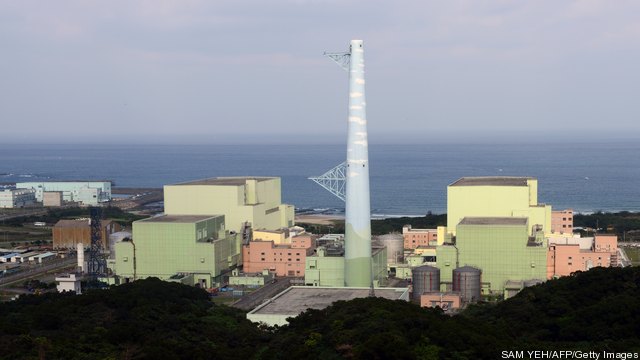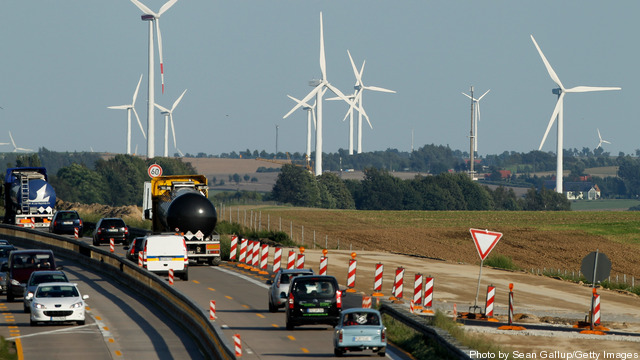Industry groups have petitioned EPA to lower the 2014 RFS ethanol mandate to below 10 percent of projected gasoline demand. On August 13, 2013, the American Petroleum Institute and the American Fuel & Petrochemical Manufacturers petitioned the Environmental Protection Agency (EPA) for a partial waiver of volume requirements under the 2014 Renewable Fuel Standard (RFS)… Keep reading →
American Petroleum Institute
Sign up and get Breaking Energy news in your inbox.
We will never sell or share your information without your consent. See our privacy policy.It’s On! EPA’s Proposed Cleaner Fuels and Cars Standards Applauded by Some, Hated by Others
By Jared Anderson
Last week the US EPA proposed regulations known as Tier 3 rulemaking that would increase fuel efficiency and tighten controls on sulfur in gasoline. The EPA described the new rules as “sensible standards for cars and gasoline that will significantly reduce harmful pollution, prevent thousands of premature deaths and illnesses, while also enabling efficiency improvements in the cars and trucks we drive.”
The environmental community, many politicians and some business associations are strongly in favor of the regulations, while the refining industry is bitterly opposed. Both sides claim the regulations will save money and have very different views on how the rules will affect gasoline prices. The following is a collection of statements EPA sent in an email from prominent environmental, political and trade group voices speaking in favor of the regulations: Keep reading →

The energy sector has heated up in recent years as natural gas drilling technology has resulted in increased supply and the power sector has revolutionized in the face of monitoring and mobile technology that boosts the promises of smart grids. Firms are hiring, investments are going ahead at both the national and international level, and the industry is attracting attention as consumer technology advances filter into the “industrial internet.”
Recognizing its role in promoting the future of the industrial internet, the Department of Energy launched a manufacturing initiative it claims will help boost the prospects of the clean economy. The Clean Energy Manufacturing Initiative is small by comparison to the controversial payouts under the stimulus in the first Obama administration, but it signals a sustained commitment by the White House to the concept of a revitalized manufacturing sector driven by cleantech. Keep reading →

The US energy sector has been a rare bright spot through much of the past four years as first financial firms and then the rest of the global economy has struggled to recover from a grinding and often jobless recession.
Statistics about jobs vary, but any region with significant oil or gas resources has noted the uptick in employment in those sectors as development has accelerated. The most recent numbers from Pennsylvania’s Department of Labor and Industry, for example, show core employment in the Marcellus Shale developments in the state up by 177.5% from first quarter of 2009 to the first quarter of 2012, even as the state’s overall employment level has lagged that of the rest of the country. Keep reading →

From the start Heather Zichal, chief energy adviser to President Barack Obama, struck Elgie Holstein as an unusual Washington player.
He got to know her when Zichal was a Congressional aide for Senator John Kerry, a position she held from 2002 to 2008. One day, she sought out Holstein, a veteran policy adviser who had served in the Clinton administration, because she needed information on refinery economics. Keep reading →

The economic boom in oil and natural gas production resulting from advanced drilling technology lifted the US gross domestic product a full percentage point during the recent recession, says an IHS Global Insight expert, and it can continue to boost the economy for the foreseeable future.
John Larson, Vice President, Public Sector Consulting with IHS, said the fossil abundance unleashed by horizontal drilling and hydraulic fracturing also lowered energy prices enough in the recession that the average household saved $1,000 overall on what energy would have cost. Keep reading →

Domestic energy development and a wide swath of regulatory issues associated with energy production should be addressed more emphatically during the presidential campaign, officials at several industry associations believe.
“Energy hasn’t been absent from the campaign, but I think it deserves a higher profile,” Brendan Williams, vice president, advocacy, at the American Fuel and Petrochemical Manufacturers, told Breaking Energy. Keep reading →

The US oil and natural gas business has been an unusual bright spot for the American economy over the past four years, and that success has helped highlight energy issues as a major factor in the 2012 election cycle.
Energy has not traditionally been a focus of electoral politics beyond prices at the gasoline pump, but this year the broader focus on the economy and the government’s role in directing it have brought to light the successes, the potential and the risks of energy development in the US. Keep reading →

Voters aren’t the only ones frustrated by the swirl of misinformation surrounding energy; so are those in the industry who find themselves in a constant battle against the sound bite and the stereotype.
Rayola Dougher, senior economic advisor for the American Petroleum Institute, says it irks her that a lot of voters assume that anyone in the petroleum industry is anti-renewable. Keep reading →

Funny thing about Americans. We’ve got strong opinions about what’s wrong with energy, especially when gasoline prices rise, but our passion tends to exceed our understanding.
Polling indicates we hold strong sentiments about energy independence and renewables. Yet key details elude us.
More than half of Americans cannot name one type of renewable energy and nearly 40 percent can’t identify a fossil fuel, according to New York-based research organization Public Agenda. Many wrongly think the US gets most of its oil from the Middle East, and few realize that it will be years before green energy makes up a large portion of our resource mix. Keep reading →

